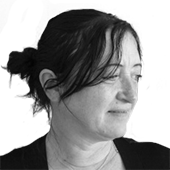More patients than ever before are using connected medical devices to remotely monitor their health as part of their care routines, putting an end to frequent trips to clinics, freeing up physician time and reducing the cost of hospital stays.
Healthcare is a huge global challenge for governments facing rising service costs and a burgeoning elderly population. Could remote health monitoring ease the burden? Certainly, increasing numbers of people are collecting medical and other forms of health data in the home. This is being securely transmitted to healthcare professionals for analysis, which advocates say is reducing costs, while providing a better quality of care and improved access.
According to figures released by Swedish market research firm Berg Insight, the number of remotely monitored patients grew by 44 percent to 7.1 million in 2016 as market acceptance of the technology continues apace. The company forecasts that the number of remotely monitored patients will continue to grow rapidly by 48 percent to hit 50.2 million by 2021.
Robust connectivity has also boosted the market. Berg maintains that cellular has replaced the PSTN and LAN as the most widely used connectivity technology for remote patient monitoring. This is because it can reliably and easily connect patients with their healthcare providers from almost any location. The number of mHealth devices with integrated cellular connectivity increased from 3 million in 2015 to 5 million in 2016 and is expected to reach 19 million connections by 2020.
Balancing the healthcare books
Experts believe that governments and healthcare providers can make major savings from adopting digital healthcare. Goldman Sachs estimates that the US alone could save $305 billion from digital healthcare in the near future. As much as $200 billion of this could come from chronic disease management. It sees remote patient monitoring leading the field in these savings, followed by telehealth and behavior modification in terms of addiction rehabilitation programs.
The National Health Service (NHS) in the UK is also looking to remote health monitoring as one of the key technologies to get it out of a budgetary black hole and prepare for a future that will stretch its resources to the maximum.
The NHS is working closely with Verily (formerly Google Life Sciences), IBM and Philips amongst others, to harness the power of technology in healthcare. Patients with diabetes in the West of England have been equipped with remote monitoring and coaching technology to allow them to better self-manage their conditions, while patients in Rochdale, North of England, who are most at risk of critical health events are being supported by telecare and remote devices. This enables doctors to provide timely and tailored help as soon as it is needed.
In Europe, the Spanish subsidiaries of Orange Healthcare and Sanofi have come up with DiabeTIC. Patients use a blood glucose meter connected to their iPhone or PC to measure their sugar levels and transmit the results to medical personnel who can in turn interact with them. It also includes a range of services around diet and physical exercise plans.
Orange Healthcare has also been working with LivaNova to help patients with implanted devices to treat cardiac rhythm problems lead a more normal life. The patient’s implanted device wirelessly transmits data to a home monitor installed in the patient’s their bedroom. The data is sent to a centralized database hosted by Orange. Doctors can access the data in easy-to-view reports via a secure website to monitor the patient’s health status.
In the patient’s interest
Remote healthcare monitoring may help health services streamline operations and cut budgets, but what are the benefits for patients? The answer is many. Remote monitoring programs allow older, disabled and patients with chronic conditions to live in their homes longer, reduce hospital stays and readmissions. At the same time, patients usually become more engaged with their healthcare, encouraging them to stay healthy and obtain a better quality of life.
Predictive analytics using data collected from patients remotely is also enabling doctors to measure real-time data against medical baselines to predict when a patient may require additional support, such as in the case of chronic diseases such as diabetes.
Fundamental to the success of remote health monitoring is the adoption of the technology by the patients themselves. Devices need to be easy to use, familiar and intuitive.
These are the reasons behind the arrival of BYOD connectivity in remote health, which will increase over the next five years, with a forecasted compound annual growth rate (CAGR) of 109 percent, according to Berg. This technology will not be reliable enough to connect every patient, but it will be useful in patient-centric therapeutic programs such as monitoring asthma, for example.
A health future
Remote health monitoring devices collecting data from patients is just the beginning, according to analyst firm Gartner, which believes Virtual Personal Health Assistants (VPHAs) could be the next big step in the health industry.
"There is significant evidence that the majority of primary healthcare visits are of little value to the patient, and represent a massive drain on trained physician time. Physician demand is outpacing supply, begging the need for alternatives," explains Laura Croft, research director at Gartner. "Technology has advanced to the point where computers have become superior to the human mind; they are more accurate and consistent, and they are better at processing all the determinants of health and well-being than even the best of doctors."
Eliminating the doctor in some areas of health, such as annual examinations for example, will ultimately happen in the future, but Croft says that first there will need to be “changes in behavior, thinking, and perhaps even law”.
Find out more about how Orange Business’ flexible computing healthcare solutions can secure your health applications and data here

Jan has been writing about technology for over 22 years for magazines and web sites, including ComputerActive, IQ magazine and Signum. She has been a business correspondent on ComputerWorld in Sydney and covered the channel for Ziff-Davis in New York.